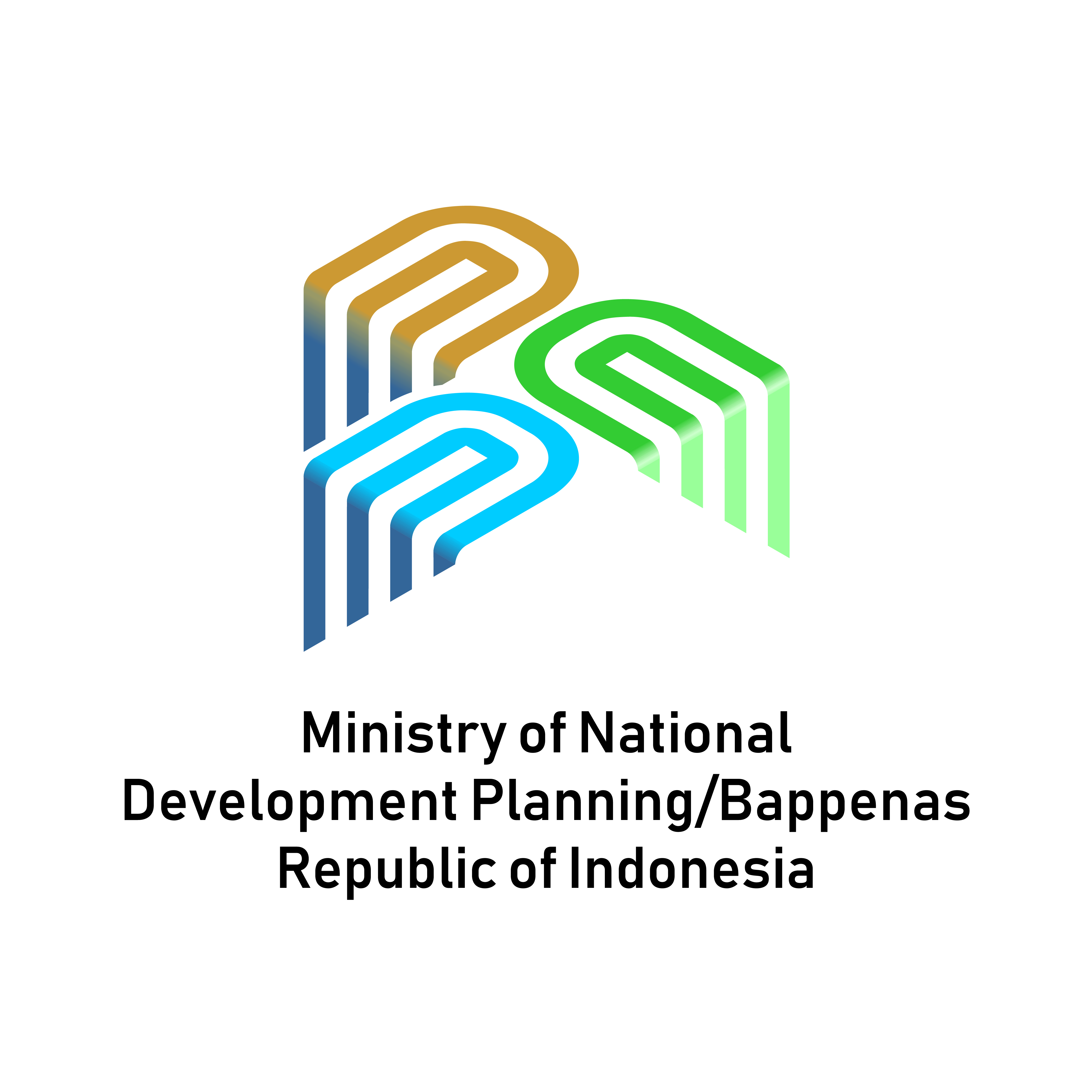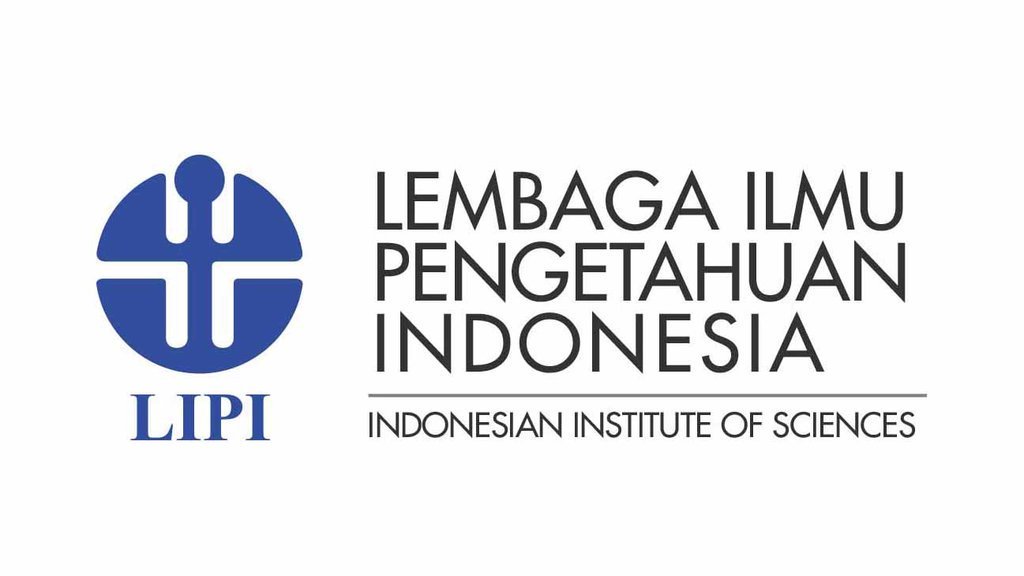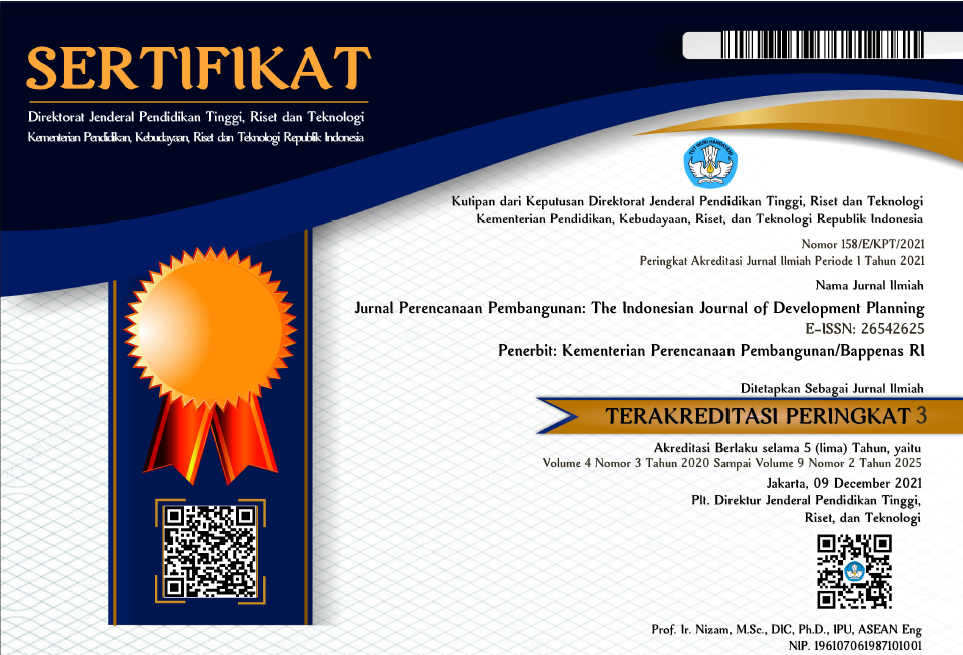Unveiling the Nexus Between ICT and Inclusive Growth in West Java Province
DOI:
https://doi.org/10.36574/jpp.v8i3.549Keywords:
ICT, mobile phone, Inclusive Economy, Inclusive Growth, Panel dataAbstract
Inclusive economic development has become a concern for many countries, including Indonesia. National economic development inclusivity continues to improve. Nationally, economic development inclusivity continues to improve, but disparities still exist in some regions, such as Java Island. West Java Province becomes the province with a relatively low Inclusive Economic Development Index (IPEI). Although its inclusivity rate is above the national average, West Java Province still faces issues of high poverty levels and inequality. This can be caused by various factors, including technological advancement. This research aims to provide an overview and assess the influence of ICT usage and other factors on the achievement of inclusive economic development in West Java Province for the period 2017-2022. The research results using panel data and fixed effect FGLS modelling show that variables such as mobile phone users, computer users, physical capital stock, and the Human Development Index (HDI) have proven to have a positive and significant impact on achieving inclusive economic development.
Downloads
References
Adejumo, O. O., Adejumo, A. V., & Aladesami, T. A. (2020). Technology-driven growth and inclusive growth- implications for sustainable development in Africa. Technology in Society, 63(June), 101373. https://doi.org/10.1016/j.techsoc.2020.101373
Adeleye, B. N., Arogundade, S., & Mduduzi, B. (2023). Empirical Analysis of Inclusive Growth, Information and Communication Technology Adoption, and Institutional Quality. Economies, 11(4). https://doi.org/10.3390/economies11040124
Adeleye, N., & Eboagu, C. (2019). Evaluation of ICT development and economic growth in Africa. NETNOMICS: Economic Research and Electronic Networking. https://doi.org/10.1007/s11066-019-09131-6
Adwendi, S. J., & Kartiasih, F. (2016). Penggunaan Error Correction Mechanism dalam Analisis Pengaruh Investasi Langsung Luar Negeri Terhadap Pertumbuhan Ekonomi Indonesia. Statistika: Journal of Theoretical Statistics and Its Applications, 16(1), 17–27. https://doi.org/10.29313/jstat.v16i1.1767
Ali, I., & Zhuang, J. (2007). Inclusive Growth toward a Prosperous Asia: Policy Implications. 97.
Asongu, S. A., & Le Roux, S. (2017). Enhancing ICT for Inclusive Human Development in Sub-Saharan Africa. Technological Forecasting and Social Change, 118, 44–54. https://doi.org/10.1016/j.techfore.2017.01.026
Asri, Y. S., Wijayanti, S. K., Vianey, A. M., & Kartiasih, F. (2023). Indikator Ketenagakerjaan terhadap Kemiskinan di Indonesia. Jurnal Ekonomi: Journal of Economic, 14(2), 157–166. https://doi.org/https://doi.org/10.47007/jeko.v14i02.7242
Bappeda Jawa Barat. (2019). No TitleForum Pembangunan Daerah (FPD) 2019 Pembangunan Ekonomi Inklusif Untuk Penurunan Kemiskinan yang Berkelanjutan di Jawa Barat.
Basuki, A. T., Purwaningsih, Y., Soesilo, A. M., & Mulyanto. (2020). Determinants of Economic Growth in Indonesia: A Dynamic Panel Model. The Journal of Asian Finance, Economics and Business, 7(11), 147–156. https://doi.org/10.13106/jafeb.2020.vol7.no11.147
Belantika, B. T., Rohmad, B., Arandita, H. D. N., Hutasoit, D. R., & Kartiasih, F. (2023). Factors affecting poverty using a geographically weighted regression approach (case study of Java Island, 2020). OPTIMUM: Jurnal Ekonomi Dan Pembangunan, 13(2), 141–154. https://doi.org/https://doi.org/10.31849/jieb.v20i2.12259
Bello, A. A., Hassan, A., Akadiri, S. Saint, Onuogu, I. C., & Aliyu, U. S. (2024). Towards ICT diffusion and trade liberalisation on inclusive growth in Sub-Saharan Africa. Environment, Development and Sustainability, 0123456789. https://doi.org/10.1007/s10668-023-04355-x
Brynjolfsson, E., & Hitt, L. (1995). Information technology as a factor of production: The role of differences among firms. Economics of Innovation and New Technology, 3(3–4), 183–200. https://doi.org/10.1080/10438599500000002
Ding, X., Huang, Y., Gao, W., & Min, W. (2021). A Comparative Study of the Impacts of Human Capital and Physical Capital on Building Sustainable Economies at. Eenergies, 14(19).
Gujarati, D. N., & Porter, D. C. (2009). Basic Econometrics. In Introductory Econometrics: A Practical Approach (5th ed.).
Hanifah, N., & Kartiasih, F. (2018). Determinan Impor Serat Kapas di Indonesia Tahun 1975-2014 (Pendekatan Error Correction Mechanism). Media Statistika, 11(2), 119–134. https://doi.org/10.14710/medstat.11.2.119-134
Hawari, R., & Kartiasih, F. (2017). Kajian Aktivitas Ekonomi Luar Negeri Indonesia Terhadap Pertumbuhan Ekonomi Indonesia Periode 1998-2014. Media Statistika, 9(2), 119. https://doi.org/10.14710/medstat.9.2.119-132
Hirschman. (1958). The Strategy of Economic Development. Yale University Press.
Kartiasih, F. (2019a). Dampak Infrastruktur Transportasi Terhadap Pertumbuhan Ekonomi di Indonesia Menggunakan Regresi Data Panel. Jurnal Ilmiah Ekonomi Dan Bisnis, 16(1), 67–77. https://doi.org/10.31849/jieb.v16i1.2306
Kartiasih, F. (2019b). Transformasi Struktural dan Ketimpangan antar Daerah di Provinsi Kalimantan Timur. Inovasi, 15(1), 105–113.
Kartiasih, F., Djalal Nachrowi, N., Wisana, I. D. G. K., & Handayani, D. (2023). Inequalities of Indonesia’s regional digital development and its association with socioeconomic characteristics: a spatial and multivariate analysis. Information Technology for Development, 29(2–3), 299–328. https://doi.org/10.1080/02681102.2022.2110556
Kartiasih, F., Nachrowi, N. D., Wisana, I. D. G. K., & Handayani, D. (2023a). Potret Ketimpangan Digital dan Distribusi Pendapatan di Indonesia: Pendekatan Regional Digital Development Index (1st ed.). UI Publishing.
Kartiasih, F., Nachrowi, N. D., Wisana, I. D. G. K., & Handayani, D. (2023b). Towards the quest to reduce income inequality in Indonesia: Is there a synergy between ICT and the informal sector? Cogent Economics & Finance, 11(2), 1–18. https://doi.org/10.1080/23322039.2023.2241771
Khalid, L., Rasul, F., & Asghar, N. (2023). The Impact of Financial Development, Renewable Energy Consumption, and ICT-oriented Strategies on Inclusive Growth of Asian Economies. JISR Management and Social Sciences & Economics, 21(2), 1–21. https://doi.org/10.31384/jisrmsse/2023.21.2.1
Klasen, S. (2010). ADB Sustainable Development Working Paper Series Measuring and Monitoring Inclusive Growth: Multiple Definitions, Open Questions, and Some Constructive Proposals Measuring and Monitoring Inclusive Growth: 12.
Kusumasari, A., & Kartiasih, F. (2017). Aglomerasi Industri dan Pengaruhnya Terhadap Pertumbuhan Ekonomi Jawa Barat 2010-2014. Jurnal Aplikasi Statistika & Komputasi Statistik, 9(2), 28–41. https://doi.org/https://doi.org/10.34123/jurnalasks.v9i2.143
Majumder, R. (2012). Removing Property and Inequallity in India: The Role of Infrastructure. Munich Personal RePEc Archive, 40941.
Mefteh, H., & Benhassen, L. (2015). Impact of Information technology and communication on economic growth. International Journal of Economics, Finance and Management, 4(2), 90–98.
Murthi, N. W., Ayu, I., Saskara, N., & Marhaeni, A. (2022). The Effect of Several Factors on Inclusive Growth in the Coastal Village–Badung. Central European Management Journal, November. https://doi.org/10.57030/23364890.cemj.30.4.138
Nchake, M. A., & Shuaibu, M. (2022). Investment in ICT infrastructure and inclusive growth in Africa. Scientific African, 17, e01293. https://doi.org/10.1016/j.sciaf.2022.e01293
Pribadi, W., & Kartiasih, F. (2020). Environmental Quality and Poverty Assessment in Indonesia. Jurnal Pengelolaan Sumberdaya Alam Dan Lingkungan (Journal of Natural Resources and Environmental Management), 10(1), 89–97. https://doi.org/10.29244/jpsl.10.1.89-97
Puspa, M. Y., Fajri, A. C., & Budi, S. D. (2019). Analysis of The Government Role for Inclusive Growth of East Java Province, Indonesia. 10(October), 158–165. https://doi.org/10.18551/rjoas.2019-10.21
Ranieri, R., & Ramos, R. A. (2013). After All, What is Inclusive Growth? The International Policy Centre for Inclusive Growth Is Jointly Supported by the Poverty Practice, Bureau for Development Policy, UNDP, and the Government of Brazil, 188, 70052.
Sife, A. S., Kiondo, E., & Lyimo-Macha, J. G. (2010). Contribution of Mobile Phones to Rural Livelihoods and Poverty Reduction in Morogoro Region, Tanzania. Electronic Journal of Information Systems in Developing Countries, 42(1), 1–15. https://doi.org/10.1002/j.1681-4835.2010.tb00299.x
Solow, R. M., & Swan, T. W. (1956). Economic Growth and Capital Accumulation. The Economic Record, 32(64), 334–361.
Todaro & Smith. (2015). Economic Development (Twelfth Edition). Pearson.
UNDP. (2017). United Nations Development Program (UNDPs) Strategy for Inclusive and Sustainable Growth. 1–147.
Wirabrata, A. (2019). Kebijakan Pembanguan Infrastruktur: Mengatasi Kesenjangan Infrastruktur Menuju Pemerataan Ekonomi Regional. In Pembangunan Infrastruktur Berkelanjutan: Perspektif Kebijakan Pertumbuhan Berkualitas (1st ed., p. 131). Pusat Penellitian Badan Keahlian DPR RI
Downloads
Published
How to Cite
Issue
Section
License
Copyright (c) 2024 Jurnal Perencanaan Pembangunan: The Indonesian Journal of Development Planning

This work is licensed under a Creative Commons Attribution-NonCommercial-ShareAlike 4.0 International License.
This is an open-access article distributed under the terms of the Creative Commons Attribution-NonCommercial-ShareAlike 4.0 International License. Copyright © Kementerian PPN/Bappenas RI

















